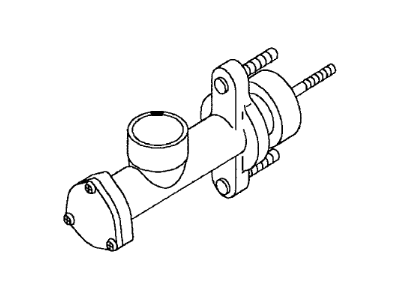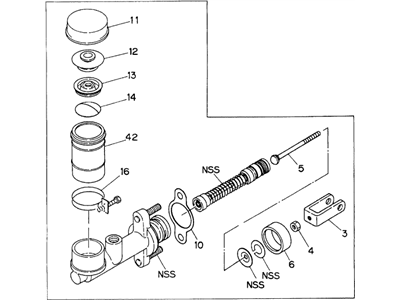×
- Hello
- Login or Register
- Quick Links
- Live Chat
- Track Order
- Parts Availability
- RMA
- Help Center
- Contact Us
- Shop for
- Honda Parts
- Honda Accessories

My Garage
My Account
Cart
Genuine Honda Passport Clutch Master Cylinder
- Select Vehicle by Model
- Select Vehicle by VIN
Select Vehicle by Model
orMake
Model
Year
Select Vehicle by VIN
For the most accurate results, select vehicle by your VIN (Vehicle Identification Number).
9 Clutch Master Cylinders found
Honda Passport Cylinder Sub. Assembly, Clutch Master
Part Number: 8-97213-036-1$19.07 MSRP: $156.27You Save: $137.20 (88%)Honda Passport Master Cylinder Assembly, Clutch
Part Number: 8-97110-221-0$146.39 MSRP: $208.54You Save: $62.15 (30%)Honda Passport Master Cylinder Assembly, Clutch
Part Number: 8-97110-222-0$146.39 MSRP: $208.54You Save: $62.15 (30%)Honda Passport Master Cylinder Assembly, Clutch
Part Number: 8-97136-444-0$146.39 MSRP: $208.54You Save: $62.15 (30%)
Honda Passport Clutch Master Cylinder
The Clutch Master Cylinder in Honda Passport vehicles work to create hydraulic pressure which is needed in engaging the clutch in models with manual transmission. When the driver releases the clutch pedal then the Clutch Master Cylindrical piston return to its initial state and so the fluid from Clutch Master cylinder shifts to the slave cylinder and this releases the clutch from the flywheel. It plays a crucial role in gear-shifting and general works of a transmission system to guarantee better efficiency. Year wise it has not mentioned what kind of Clutch Master Cylinder style has used in Honda Passport Vehicles but generally it describes about it. Some of the problems associated with the Clutch Master Cylinder include fluid leaks which may result into spongy pedal feel or may have trouble shifting gears. It is very important to keep Clutch Master Cylinder clean because the faults in this component will affect drive ability of the vehicle.
In search of affordable OEM Honda Passport Clutch Master Cylinder? Consider browsing through our extensive inventory of genuine Honda Passport Clutch Master Cylinder. Not only do we provide market-leading prices and a manufacturer's warranty, but we also pride ourselves on exceptional customer service and swift delivery.
Honda Passport Clutch Master Cylinder Parts Questions & Experts Answers
- Q: How do you remove and overhaul the clutch master cylinder on Honda Passport?A:To reject the clutch master cylinder, one has to uncouple the hydraulic pipe from the clutch master cylinder and discharge the fluid to a suitable jar, by using a flare nut wrench if possible in order not to mar the fitting. After that, under the dash, one should unlock the clevis pin securing the pushrod to the clutch pedal and then, as for the master cylinder, remove the flange mounting nuts to separate it from the firewall. In the case of the overhaul, the retaining clamp needs to be unscrewed, and the reservoir needs to be pulled off, after which the master cylinder has to be fixed in the vise, pushing down the piston after which remove the snap-ring with the help of snap-ring pliers or a tiny screw-driver. Remove the piston and spring in such a way that the sealing lip is in a forward position. This area, located internally on the cylinder bore, can develop scoring or bright wear and, in this eventuality, the master cylinder will need to be substituted entirely. If the bore in well-maintained, then get a rebuild kit which will consist of other vital components which will be replaced, these parts should be washed using brake fluid and then fitted. Replacing the parts, in a sequence in which they were removed; the piston seal lip should be positioned forward. Last but not the least, the clutch master cylinder should be fitted in place against the firewall, the pedal pushrod should be slid into place into the piston region should be tightened securely and the hydraulic system for the clutch should be bled followed by standardizing the height of the pedal and the degree of freeplay.












